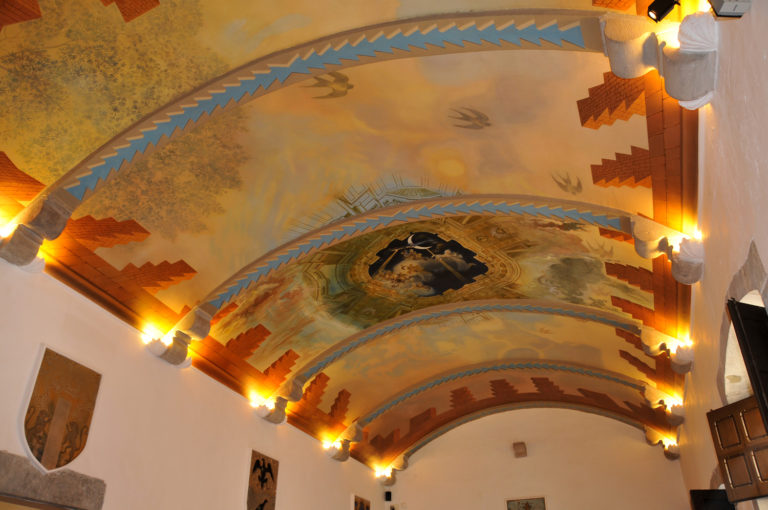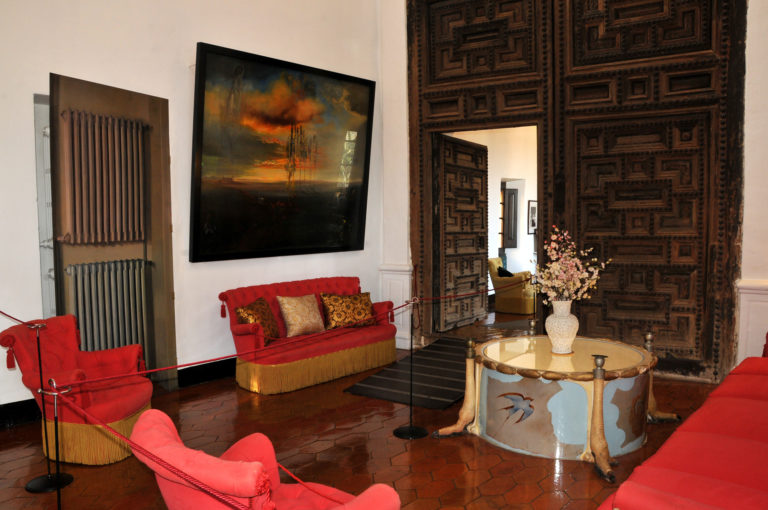Salvador Dalí
-

Biographical note
Salvador Dalí (Figueres, 1904–Figueres, 1989) is the Empordà’s universal artist. With a unique and internationally recognised body of work, he has become an icon of contemporary culture. Brilliant and dramatic, Dalí is the most famous of the surrealist painters.
Dalí’s education started in Figueres at the municipal school of drawing, as a first step before moving to Madrid to study at the school of fine arts. During his career, the painter lived in the Empordà, Madrid, Paris and New York. Many influences can be found in his work, which gradually developed a unique style based on a highly-detailed technique depicting dream-like scenes; something the artist himself described as the paranoiac-critical method.
His work
Dalí’s work covers a period from 1910 to 1983. However, his most important works, which now form part of the global popular imagination, date from the second half of the 1920s up to the 1980s. The persistence of memory (1931), The face of war (1940), Dream caused by the flight of a bee around a pomegranate a second before awakening (c. 1944), Leda atomica (1949) and Galatea of the spheres (1952) are just some of his best known paintings. Other important works include Figure at the window (1925), The great masturbator (1929) and Gala nude looking at the sea where at 18 metres President Lincoln appears (c. 1975), but it should be noted that his artistic career also included genres such as literature, sculpture and cinema, as well as the Dalí Museum, which he regarded as a work of art in itself.
-

Dalí and the Baix Empordà
One of the most emblematic spaces associated with Dalí is the Gala Dalí House-Castle Museum, in Púbol (municipality of la Pera). There are records of the castle dating back to the 11th century and its period of greatest importance was the 14th and 15th centuries. Dalí bought it in 1969 and started work to restore it, given its advanced state of deterioration. The castle was a gift from Dalí to Gala, who made it her place of rest and refuge. The painter conceived the building as a work of art in its own right, and took charge of the paintings and decorative elements of the interior of the “galactic cathedral”, as he called it. The castle is now a House–Museum, displaying the collection of works that the surrealist genius made for the building. This site in Púbol, along the Dalí Theatre–Museum in Figueres and the House–Museum of Portlligat in Cadaqués form part of what is known as the “Dalí Triangle”.
Dalí was associated with the town of Llafranc. The painter was a friend of Manel Bisbe, one of the owners of the Hotel Llafranch, who was known as “El Gitano” and liked to dress up as the artist. This was one of the most important sites of cultural and social activity during the tourist boom of the last century. Dalí, as a symbol of his friendship with the owners of the hotel, gave them a painting, which is still on display in the establishment.
Another curious fact that links Dalí to the Baix Empordà is a hut located close to Platja de Castell, in Palamós. This is an unusual structure owing to its inclined door, and it was once connected to the Mas Juny estate and its owner Albert Puig i Palau who was a friend of Dalí and had the hut built so that the artist could install his painting workshop-study there. However, Dalí never painted there, as he had a studio in Portlligat.


 Escoltar
Escoltar


